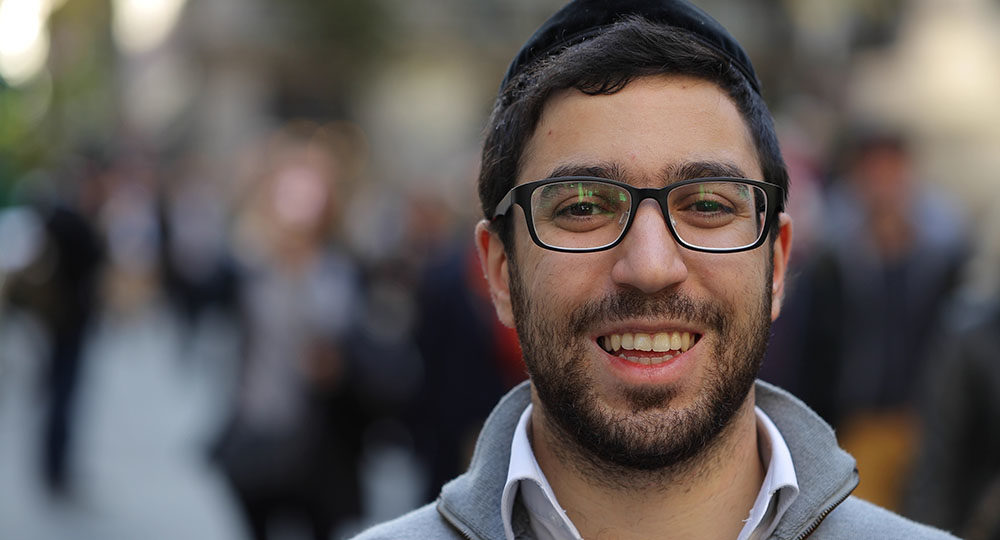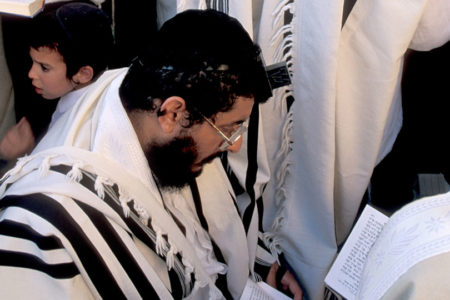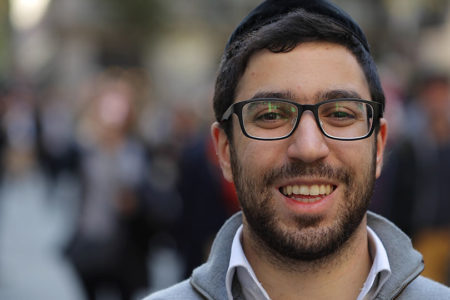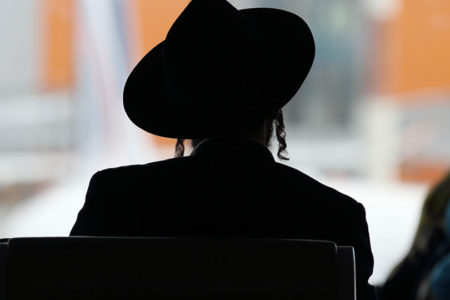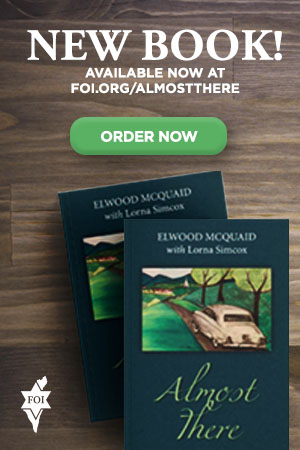Conservative Judaism
Balancing the Past With the Present
The Jewish expression “Eat kosher but think trayf [non-kosher]” encapsulates the ideology of one of the more popular branches of modern American Judaism. An attempted medium between the traditional and liberal wings of Judaism, Conservative Judaism seeks to balance past traditions with modern thought.
History And Development Of Conservative Judaism
Conservative Judaism sprang out of the European Enlightenment and Emancipation of the eighteenth century. With mankind’s reason becoming the measure of all things, every aspect of traditional life was questioned. This intellectual, cultural, and political analysis spilled over into rabbinical Judaism, particularly in Germany, and manifested itself as the Reform movement. All of traditional Judaism was measured by the necessity of modern practicality. As a result, many of historic Judaism’s rituals and customs were abandoned.
Some people in the Reform movement, however, were more conservative in their reformations. They believed that change within Judaism was necessary but that it should happen more slowly and gradually, and certainly not by eliminating all of the traditional ceremonies that had bound Jews together for centuries. This brought great dissension within the Reform movement. In 1845 the liberals in the Reform movement declared that Hebrew was not a necessary element of Jewish prayer, and this proved to be too much for the conservative Reformers. They broke off from their colleagues and, in 1854, formed the Jewish Theological Seminary of Breslau. Its first leader, Zechariah Frankel, became known as the founding father of the Conservative movement.
Shortly after the seminary was founded in Germany, a similar institution was founded in the United States. At a graduation ceremony of Reform rabbinical students, the liberal Reformers arranged a banquet that included shrimp, crabs, clams, and frogs’ legs—all non-kosher foods. The conservative Reformers were horrified and walked out of the banquet. A few years later, the Reform leaders renounced dietary laws completely. The break for the Conservatives was complete. They felt that the Reform movement was going too fast and making changes too quickly, seemingly without the approval of Jewish congregations at large. In 1886 it was resolved that a new seminary be established in New York (today known as the Jewish Theological Seminary of America) to train and educate rabbis in Conservative studies. The school grew with the help of such learned men as Solomon Schechter, Louis Ginzberg, Louis Finkelstein, and others. Today the Jewish Theological Seminary of America is recognized as one of the leading scholarly Jewish institutions in the world.
Conservative Judaism has produced not only a seminary but various other organizations: the Rabbinical Assembly (an association of Conservative rabbis); the United Synagogue of Conservative Judaism (a league of Conservative congregations); and the Jewish Publication Society of America (a publishing house), which has published thousands of Jewish books and periodicals.
The term Conservative Judaism is used in various ways within the movement. Conservative Judaism is conservative when compared to Reform Judaism. It is conservative in the speed by which change takes place and how that change is accomplished. It is also conservative in the sense that it seeks to conserve most of the ancient Jewish customs.
Today there are more than 800 Conservative congregations in North America. In the United States alone, “slightly more than 1.2 million adult Jews who were born Jewish and report their current religion as Jewish identify themselves as Conservative, as do 806,000 households.”*
Nevertheless, Conservative Judaism has had occasional problems with internal divisions and fragmentation. A popular faculty member, Mordecai Kaplan, left the Jewish Theological Seminary in 1963 to develop yet another movement of Judaism known as Reconstructionism. This movement believes that Jewish people are not a nation but are, like many other people groups, an evolving civilization that creates its own religion. God is seen as an intuitive, universal force within nature and mankind.
Another group, the Union for Traditional Judaism, splintered off in 1983 because the Conservative movement allowed the ordination of women.
Tenets Of Conservative Judaism
Conservative Judaism’s offshoots are symptomatic of the inherent tension between its need of a theology and its pluralistic pragmatism. Conservative Jews have historically defined themselves in terms of what they are not. They are not Reform, and they are not Orthodox. They are also identified by what they do, not by what they believe.
If there is one foundational tenet of Conservative Judaism, it is found in the expression positive historical Judaism. This catchphrase was coined by Zechariah Frankel. By this he meant that traditional Judaism should be revered and honored but not made into a monolith. Over the centuries, Judaism has changed in various degrees in order to survive and adapt to contemporary conditions. This has been necessary and historically positive. But change should not be made randomly or haphazardly. Instead, positive historical Judaism calls for gradual and thoughtful change as determined by the evolutionary desires of the Jewish community at large.
Conservative Judaism’s philosophy has also been labeled “enlightened traditionalism.” Modern intellectualism and freethinking scholarship are not to be stifled, as in the Orthodox movement. Nor is there to be an almost complete denial of Jewish tradition and custom, as in the Reform movement. A balance must be struck. Conservative Jews must hold on to the past in their practices (eat kosher) but be completely modern in their thinking (and think trayf).
In practice, some Conservative Jews may keep kosher at home but eat ham sandwiches when dining at a restaurant. They may feel it is better to walk to the synagogue, but driving is permissible and sometimes preferred. They may no longer be content to attend an impersonal synagogue where the rabbi gives a formal sermon. Instead, the rabbi may come down from the platform and engage the congregation in a discussion of the day’s Torah reading. Today’s Conservative Jews may even participate in small groups that meet in more casual settings, such as a home or a comfortable room in the synagogue.
Many Conservative Jews feel that narrowly delineating a system of Conservative beliefs goes against the whole concept of freethinking and the authority of self-determination of the local congregation. For this reason, it took more than a hundred years for the Conservative movement to development some semblance of a doctrinal statement.
In 1988, after much debate and discussion, the Conservative movement published a brief declaration of what Conservative Jews generally believe. The document is called Emet Ve-Emunah, and it does not refer to itself as a doctrinal statement or a statement of beliefs. Rather, it is subtitled, “Statement of Principle,” an indication of the ambiguity within the movement regarding ideology. The following are some of its highlights.
God: “Conservative Judaism affirms the critical importance of belief in God, but does not specify all the particulars of that belief.” God can be a “supreme, supernatural being” or a transcendent force whose “nature is not completely independent of our beliefs and experiences.”
Revelation: There is “an external source of truth emanating from God.” “Fundamentalism and literalism” are rejected since they “do not admit a human component in revelation.” Revelation is given through certain events, through an ongoing process, or through special experiences with God that inspire new ideas and practices.
Jewish Law: Jewish law (rabbinical interpretation and tradition) defines Jewish lifestyle. This law is continually developing. The law changes as the need to adapt to contemporary situations changes. Authority to change Jewish law lies with both the rabbinical leadership and the lay community at large. Jewish law “is what the Jewish community understands God’s will to be.”
Evil: The presence of evil actions and events cannot be fully explained. Evil results most often from the evil choices people make as they use their free will. Uncontrollable evil events or disasters are difficult to harmonize with the concept of a benevolent God. Compassionate deeds and charitable actions are the best way to respond to incomprehensible evil.
Messianic Hope: The messianic figure may be an actual person or symbolic of an age of peace, tranquillity, and justice for which all people should work in partnership with God. There is life after death, either literally or through the lives and memories of descendants. God’s justice will prevail over evil in the end.
Israel as the Chosen People: God’s choosing of Israel may be literal or figurative. In either case, the concept is not to produce arrogance but a responsibility “to bring the truth of God to the world” and “to build a just and compassionate society.”
The State of Israel: Conservative Judaism strongly supports Zionism and the State of Israel, while encouraging the Jewish state to respect the beliefs and rights of minorities within its borders.
Challenges of Conservative Judaism
The Conservative movement faces numerous challenges in the years ahead. Issues in the forefront of future debates may include “euthanasia, genetic engineering, organ transplants … games of chance in the synagogue, kashering [making kosher] microwave ovens for Passover use, conversion practices, the use of the same electric dishwasher for milk and meat dishes … and most recently, the range of issues raised by a newly vocal group of Jewishly committed gays and lesbians and their supporters.”*
Challenges for Conservative rabbis are increasing. Until recently, they were trained to be primarily scholars and academicians, not shepherds. To address this problem, the seminary has recently changed its undergraduate curriculum to help its rabbis become more user-friendly—better down-to-earth counselors, not just intellectual highbrows.
Despite its best efforts, the Conservative movement has yet to produce a solid base of committed, observant Conservative Jews. It is estimated that only about 15 percent of Conservative congregants keep kosher, attend synagogue regularly, and become involved in Jewish adult education classes. Most Conservative Jews find it difficult to even give an accurate definition of what it means to be Conservative.
The movement’s leadership hopes that these challenges to Conservative Judaism can be confronted squarely and successfully. They are confident that this will happen as each conservative congregant makes an effort to be what the Emet Ve-Emunah calls “the ideal Conservative Jew”: one who is willing, learning, and striving.*
Evaluation of Conservative Judaism
The main problem Conservative Judaism faces is its own identity. By trying to balance the past with the present, Conservative Judaism is like a man who attempts to have each foot in a different boat. Without an anchor, he eventually must decide which boat he will ride in, or he will fall into the water. By hedging on the authority and inspiration of the Word of God, Conservative Judaism has no anchor. It will have to become either more Orthodox or more Reform in order to survive. It cannot be both.
Scripture has an interesting description of the double-minded man. He is “unstable in all his ways” (Jas. 1:8). Jesus Himself said, “No man can serve two masters” (Mt. 6:24). Perhaps the Conservative Judaism movement would do well to heed the words of the Prophet Elijah: “How long halt ye between two opinions? If the Lᴏʀᴅ be God, follow him; but if Baal, then follow him” (1 Ki. 18:21).
